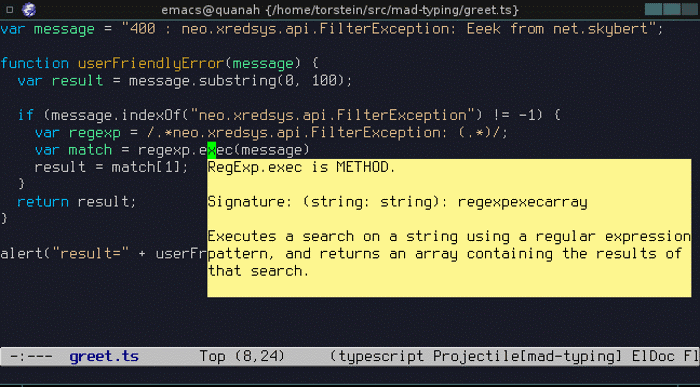

We then declare the getQuote function, which is an async function that allows us to use the await keyword to wait until we fetch the data from the API. We first select the quote element from the DOM. Let’s shortly explain what is happening right here. Using these events would result in something like the following: window.addEventListener("focus", function () ` The most popular was using the blur and focus browser events. In the past, you had to use gimmicks to know if a user had switched tabs or minimized the window. To be precise, the API triggers an event whenever the page visibility status changes, either when the user minimizes or maximizes the window or switches the tab. It lets you know when a user has left the page. This is a little-known web API that rates last fourth in awareness in the State of JS Survey. Note: These APIs are all available in this demo.
Java scripting api how to#
In this article, we will see what they are, where we should use them, and how to use them. I wanted to know which APIs we aren’t talking about enough, and among them, I found four pretty different APIs that are extremely useful: Instead, I was looking for the least known ones. However, I wasn’t interested in the most used or known APIs. As you can imagine, among the most used features are popular ones like Optional chaining, Nullish coalescing, Websockets, and so on. Among the data it collects, a section is dedicated to the native features JavaScript provides, listed by their usage and awareness. The state of JS is an online survey that collects data from developers around the world to see the most recent and upcoming trends in the JavaScript community.

Together we will see what they are, where we should use them, and how to use them.Ī couple of days ago, I revisited the awesome 2021 State of JS Survey. getCreator ( 0 ) ) // ) return ids.In this article, Juan Diego covers the least known yet extremely useful APIs, such as the Page Visibility API, Web Sharing API, Broadcast Channel API and Internationalization API. getField ( 'title' ) ) // "Much Ado About Nothing"Īlert (item. saveTx ( ) return itemID // Fetch saved items with Items.get(itemID) var item = Zotero. setField ( 'title', 'Much Ado About Nothing' ) ĬreatorType : "author" } ] ) var itemID = await item. (The Zotero pane will always be available unless the main window is closed, as is possible on macOS.)Ī typical operation might include a call to () to retrieve a Zotero.Item instance, calls to Zotero.Item methods on the retrieved object to modify data, and finally a save() (within a transaction) or saveTx() (outside a transaction) to save the modified data to the database. Once you have Zotero, you can get the current ZoteroPane object:
Java scripting api windows#
Otherwise, you can import the Zotero object into other windows by including the script chrome://zotero/content/include.js within an HTML or XUL file: If your extension operates within the main Zotero window, you already have access to the Zotero object and don’t need to take further steps. To access Zotero functionality from your own extension, you will need access to the core Zotero object. Zotero methods can then be called from anywhere within the window's scope simply by calling, for example, var item = (1). Windows in Zotero can import the core Zotero object via the include.js script.
Java scripting api code#
In Zotero, non-window code is contained within the xpcom subdirectory. This includes the core Zotero object, which contains all other non-window code, including the data layer used for retrieving and modifying library data. Non-window scope applies to lower-level code that doesn't have access to the DOM. The main window-scope object in Zotero is ZoteroPane, from zoteroPane.js, which controls most interactions triggered in the main Zotero window. It has access to the window's DOM and can interact with the UI.

Window scope applies to code that runs within either the main Zotero window or a secondary window (e.g., the Advanced Search window). Zotero code exists in either window scope and non-window scope.


 0 kommentar(er)
0 kommentar(er)
